I am quite excited to write this article, as I see after a long time (the last series of innovation was when Tesla launched their model S and BMW their i3 around early 2010's) real innovation happening in the EV world. I say this because, in the last year alone there has been a lot of EV models that are rolling out of showrooms, esp. here in Europe. But to me, they seem like just another EV with a big name brand on it (eg: Audi E-trons, Porsche Taycans, VW ID3s, Mercedes EQxs, Skoda Enyaqs etc.), but not much of path breaking things to talk about them. They all had their brand DNA's but not taken full advantage of a thoroughbred EV platform. They all want to eat into the market share of EVs for their respective brands. Some brands like Hyundai (Ioniq) and Tata (Nexon) developed platforms which can accommodate either Electric or ICE powertrains, which I think is an innovation in strategy, but not in technology. Such switchable platforms have inherently poor packaging (eg. no Frunk).
But with Lucid air's launch, I kind of see real innovation is happening. From how to use an EV powertrain effectively to get more space out of the car, more performance with less energy consumption and a plethora of simple but user focused features (Vehicle to Vehicle charging, Vehicle to grid charging etc.). After all a well engineered car is a well packaged one, and I think Lucid air has almost nailed it.
Here is a text and image based overview of their launch film. For people who already saw the almost 1.5hour long video, some of these might be already known, but I try to keep it interesting by making some comparisons (with other EVs/ generally other Cars) on the way.
Company
First let me start with the company. I have heard about Lucid motors for quite some time in some EV blogs and forums, but I did not care to even check what models do they have or being developed. For me what counts is when they can be bought and used by people, ie there can be tens and hundreds of concept cars, but only few concepts make it into production. It is not worth reading or analysing cars, until they make it to the streets. Lucid air is a mature enough product worth analyzing. I think they have a good technology (esp. in-house), they have a strategy and they have enough financial backing to produce the cars.
Leadership team
At the end of the launch film, there was a Q&A with the leadership team. I find their profiles very interesting, given their backgrounds. So here are some of my opinions based on what I see, heard, known and experienced.
Peter Rawlinson - CEO/CTO - This guy served as chief engineer at Lotus, chief engineer at Jaguar and a lead engineer for Tesla model S. Ask anyone who drove a Lotus Elise or Elan and they will immediately tell you how agile, light and fun to drive cars they are. And model S is unmistakably a clean sheet design. This combination hooked me how this guy will pick/picked his team.
Derek Jenkins - VP of Design - He is the one who contributed to ND Mazda MX-5 design. That itself hooked me, as I owned an MX-5 ND for few years. The other cars like the Mazda 3, 6 and CX-9 too are really good designs.
Peter Hochholdinger - VP of manufacturing &
Eric bach - VP of hardware engineering - The reason I have both of them combined is they have lot of things common in their profile. Both Germans, studied at the same university, schooled in the autobahn loving German auto industry (Volkswagen group) and worked for Tesla before joining Lucid. [Trivia: Eric Bach mentioned that he would love to test Lucid air on German Autobahn, as it is one of his wishes when the car is homologated in Europe]. Having Germans at the lead of manufacturing and hardware engineering is a smart move of Lucid. Now we can be rest assured that the hardware is reliable and screwed well together (given the company staff and employees follow the ethos of their leadership

)
Sue Magnusson - Deisgn Manager CMF (Colour, Material and Finish) - Well, from the way she explained about how some cities in california at various time of day looks and its influence on the interior themes of Lucid air got me interested. Design is all about influences and this californian company deserves such interior themes for their cars. I don't know why she did not get a profile page on their website.
By the way, except for the CEO/CTO, the remaining 4 of them had worked in the past for the best part of their career with Volkswagen group. I think it is a loss for VW, as they are still fiddling with the software for ID3

even after handing out cars to customers.
Btw, the
board of directors is a different ballgame. I am an engineer and not a financial or business expert to assess how the board has such a diverse group of investors
Diving a bit into the car itself.
Production and deliveries:- Spring 2021 will see first Limited edition versions roll out of the Casa grande plant in Arizona, USA. This is the top variant called Lucid air dream edition and costs 169000USD
- Followed by Grand touring and touring ediitons late in 2021.
- In 2022, comes the base Lucid Air for less than 80000USD. I think this will be very popular in European lease car fleets, esp. for middle management levels.
The Formula E connection- Atieva Technologies is the technology wing of Lucid motors
- They supply battery packs for not one but all the formula E cars for the 6th edition of Formula E race series. A short overview by bloomberg below.
- Before Atieva was supplying battery packs to formula E, the drivers have to swap cars mid race, because there was not enough charge to finish the race fully (Btw, the older batteries were made by Williams). But Atieva revolutionised this with their highly energy efficient and powerful battery packs, so that the formula E regulations have been changed with no charging/car swapping stops during the race. This is an interesting connection as Lucid has the technology already used in E-Prix race cars. None of the other mainstream EV manufacturers have this fomula E pedigree
Exterior design:- The theme seems to be a single line flowing through - on the sides, front and back
- Micro lens array for head and tail lamps.
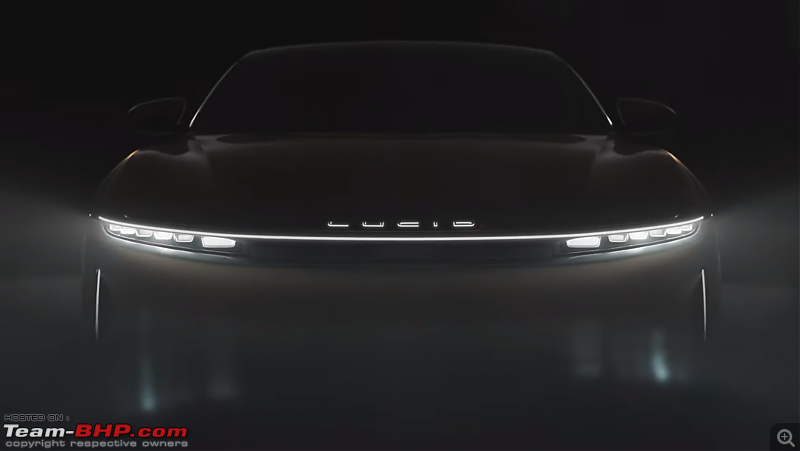
- Miniaturization of headlamp into smaller micro lens array of LEDs to increase efficiency
- Solid state swivelling high beam with thousands of little optical channels and control the throw in a homogenous way. They have an in house optical engineering team. How cool is that!
- The Tail lamp is a single piece.
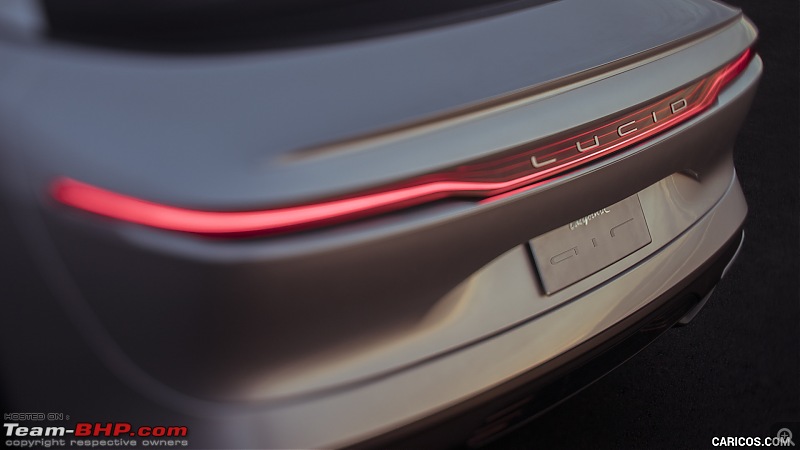
- The rear looks a little bit of an Alpine A110, atleast to me.
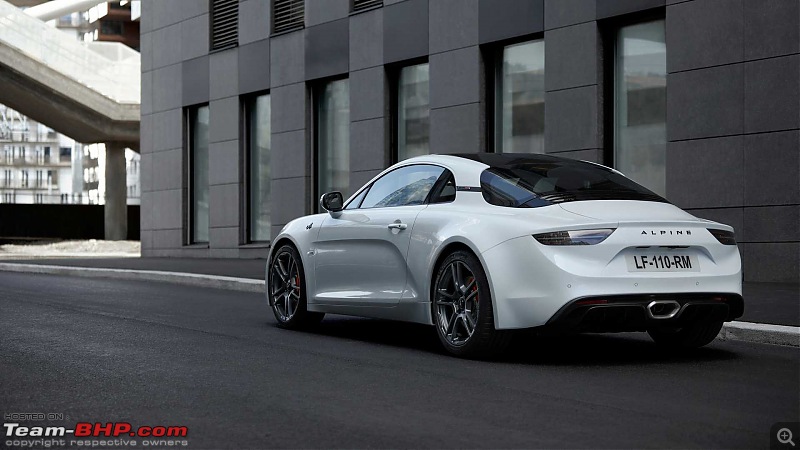
Interior design- Touch screen with a minimalist UI
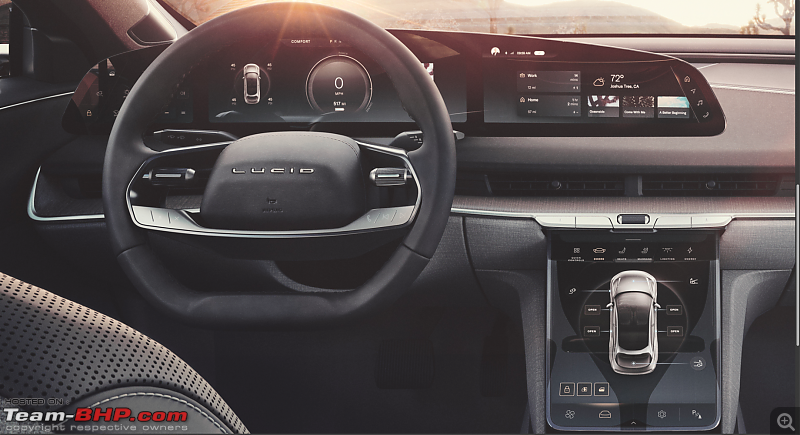
- Duality in interior themes between front and back. Front being more driver oriented with more darker shades and the rear being roomy and spacious with lighter shades for those who are chauffeured around
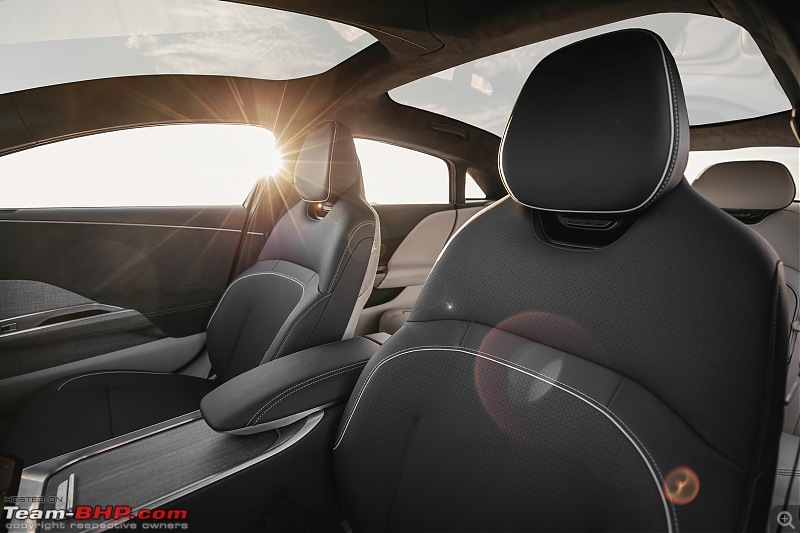
- Bench and Executive rear seat. Not sure if the executive seat is an option on some variants
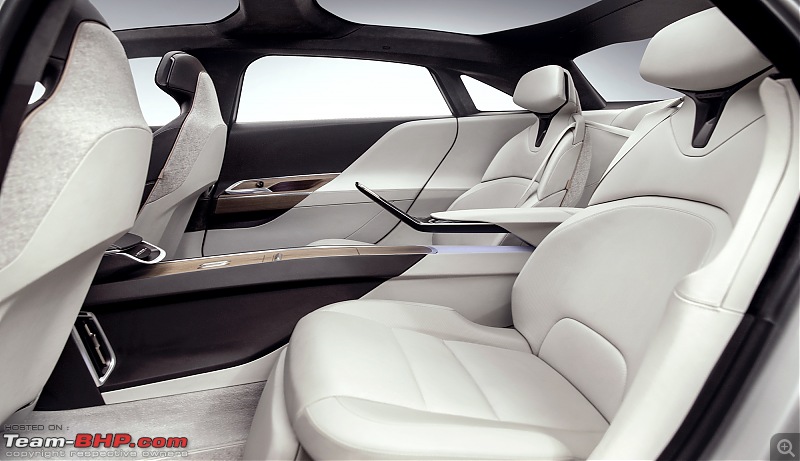
- I still miss those ISOFIX tethering points, as they look too small to be usable in pictures. Maybe they are still designing that bit or the pictures don't show the production version
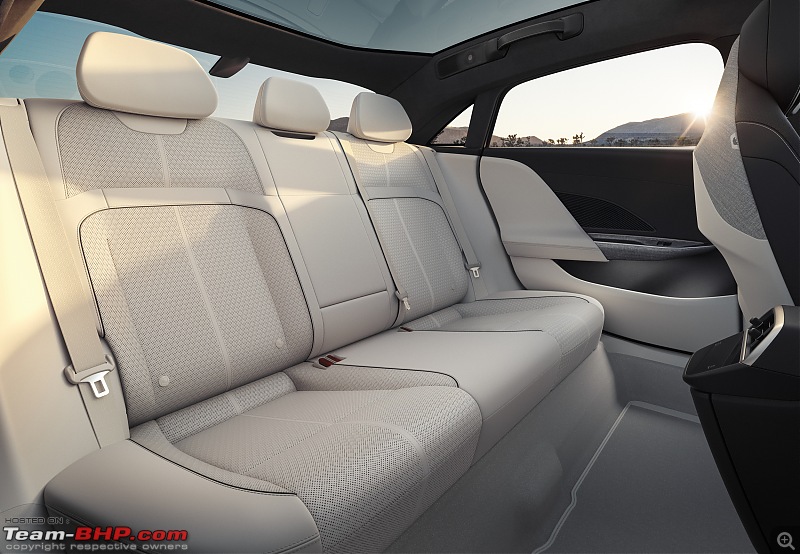
- Thoughtfully located roof grab handles close to the passengers.
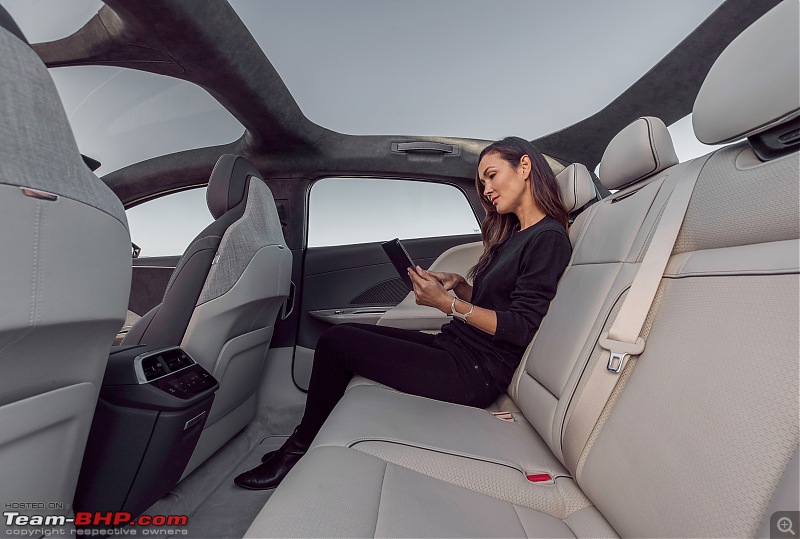
- Temperature and fan adjustment gets physical button and has a scroll wheel, probably to be used in combination with a button+scroll
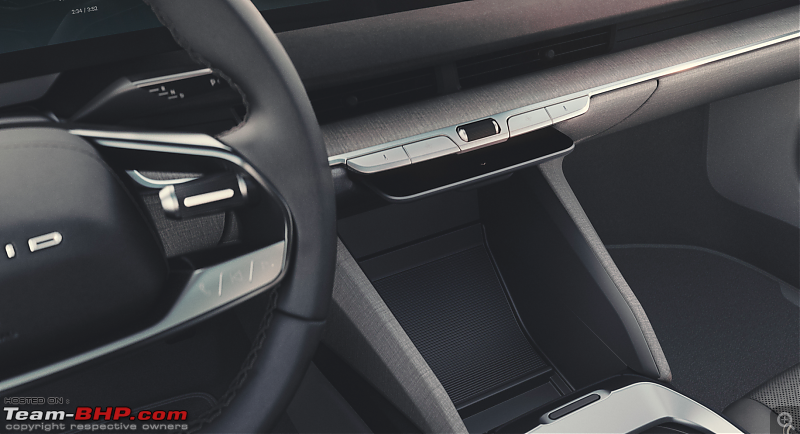
- Steering wheel has a floating scroll wheel design (Lucid calls it roller toggle). Feels roomy, but practically might be a pinch point for people who rest their arms on the stem of steering wheel, esp. when you want to swerve quickly to avoid a potential roadkill.
- The handles for drive mode selector and wiper control looks Tesla-esque
- Windshield extends as a panoramic roof. A bit shaped weirdly. Have to wait and see long term durability and cost of fixing/replacing for any damages

- One can't seem to open the middle console sliding cover fully, as the handrest sits in the way.
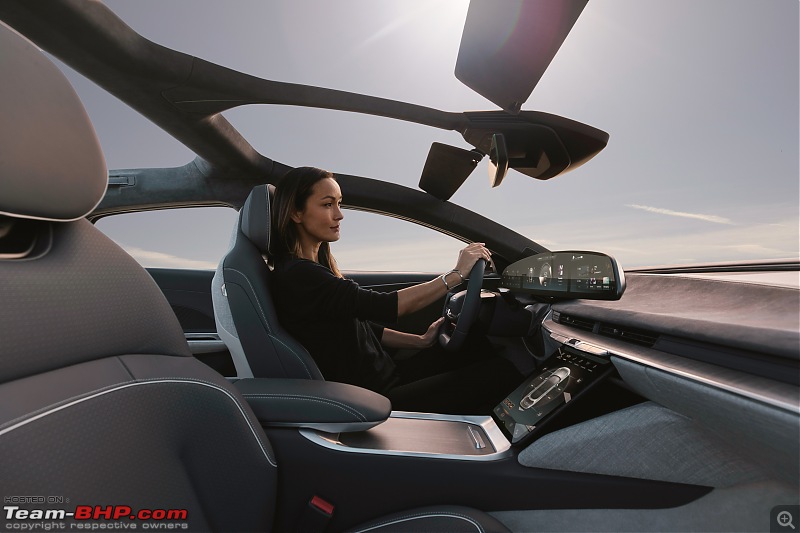
- The front interior dome light strip extending from middle to the inside rear view mirror is a thoughtful design
- Every interior theme is inspired by a combination of time of the day and location, where you would like to be in the American state of California.
- 5K curved floating display for optimized for the driver
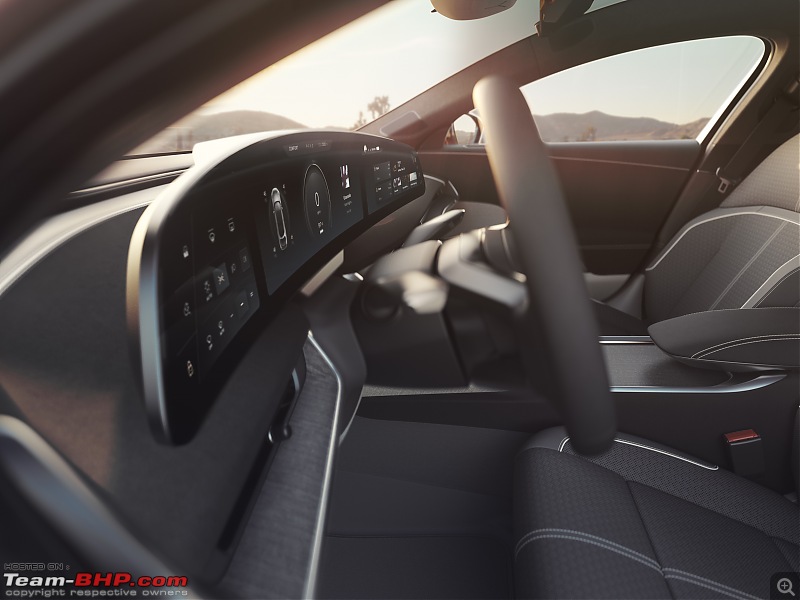
- Another display at the front of middle console which retracts into dashboard

- Facial recognition for driving is an industry first, I think
- Alexa voice commands.
Chassis- Battery pack is a structural stressed member
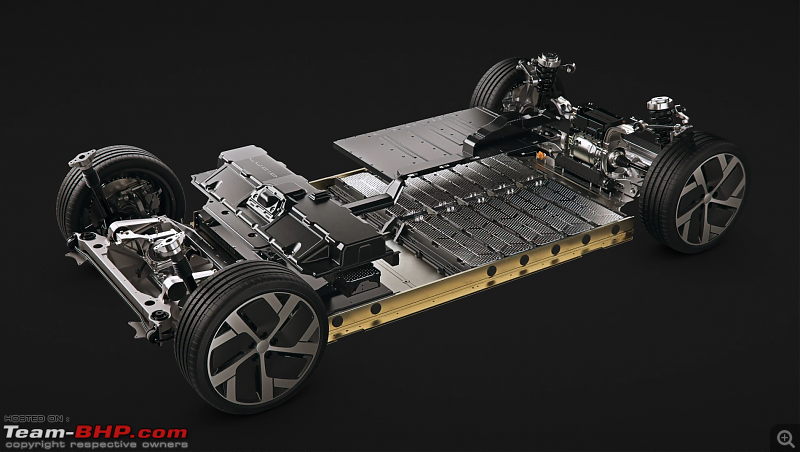
- All wheel independent suspension
- Front wheels have McPherson strut with multi-link arms, however resembles more of a double wishbone suspension in geometry. This is a pretty neat combination of comfort and balanced driving dynamics
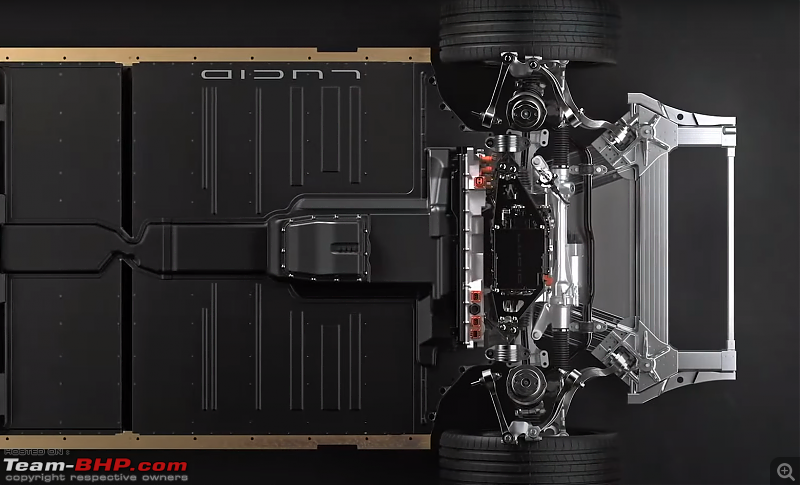
- Rear suspension from the pictures (It is not mentioned anywhere) and videos look more like a multilink setup but the upper and lower control arms are pretty well fixed in z axis, which means this too has a potential to provide the double wishbone advantages (read better handling, cornering and grip)
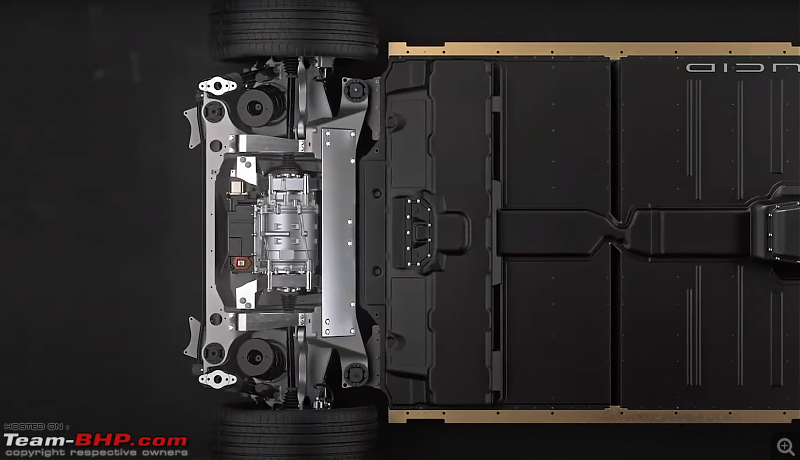
- What I miss is, they did not specify kerb weight in any of their official documents. With such an effective packaging and loads of empty space (A hole/empty space is the most lightweight component in any car. No one can beat that
 ), if they bring the weight less or at the levels of model S or even model 3, that will be a crown in their head.
), if they bring the weight less or at the levels of model S or even model 3, that will be a crown in their head.
Powertrain - Innovation in packaging and efficiency improvement- Motor and transmission as single inertial system. Combining the teams together instead of keeping them apart has its own benefits, esp. in terms of system design.

- Motor, transmission and Inverter as one unit- 73kgs and easily will become the industry benchmark for it's volume, weight and power density. See comparison with (Lucid doesnt say explicitly) Tesla model S, Tesla model 3 & Porsche Taycan
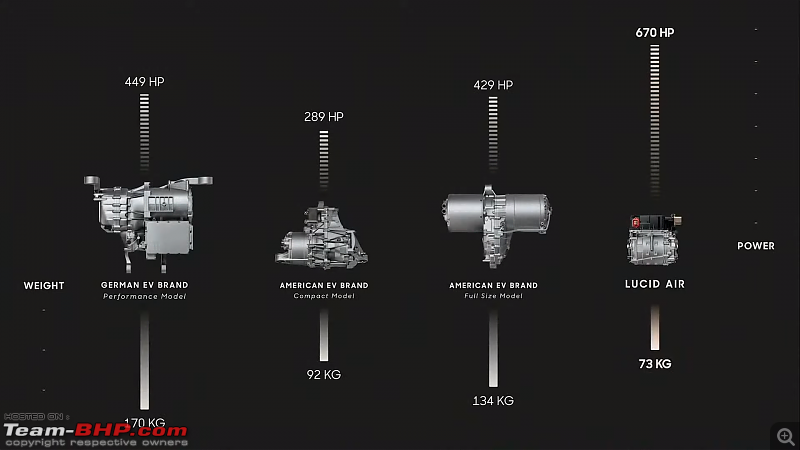

- Single, Dual and triple motor configurations
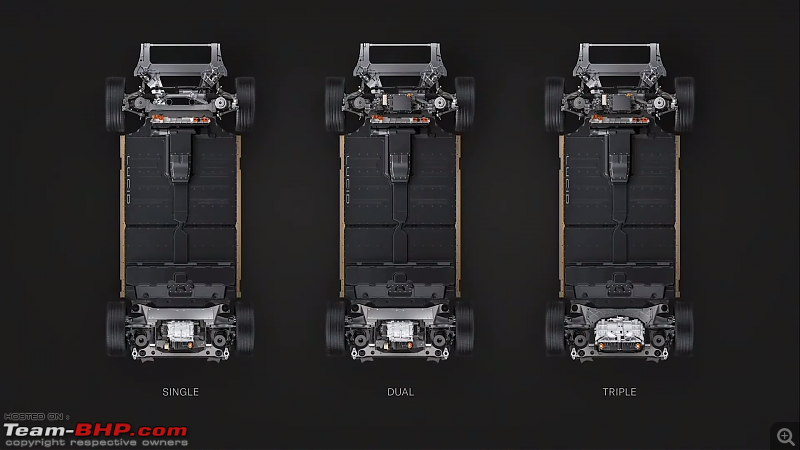
Footprint, Cabin room and Luggage space- With Lucid air's space concept, they achieved never before seen levels of space in a luxury sedan, not only compared with Luxury EVs, but with all luxury car segments. See space concept in action below:
- Comparing a traditional ICE (and even than competitor EVs), there is a lot of room inside due to the small powertrain and efficient packaging.
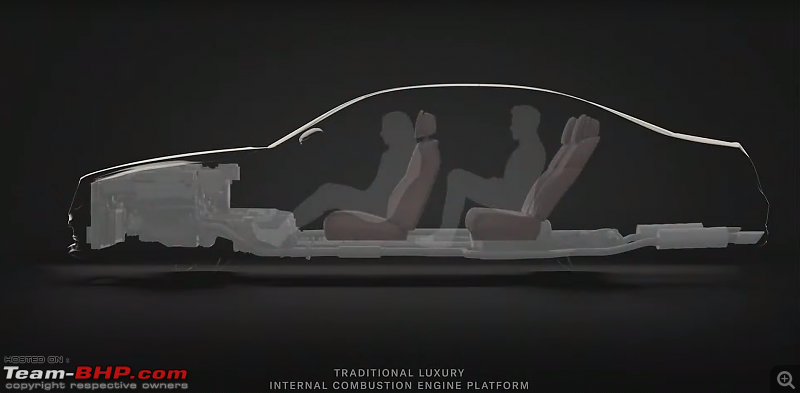

- Foot garages. This is a concept used in porsche taycan as well. Not placing the battery modules just where the rear passenger feet will be located in the skateboard (see pic of chassis above under battery as stressed member)
- 4 frunks in one (Porsche Taycan, Audi E-tron, Jaguar I-pace, Tesla model S)
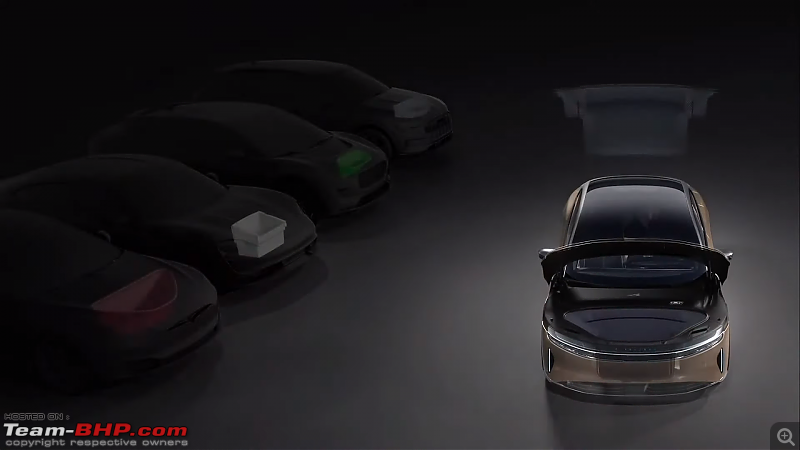
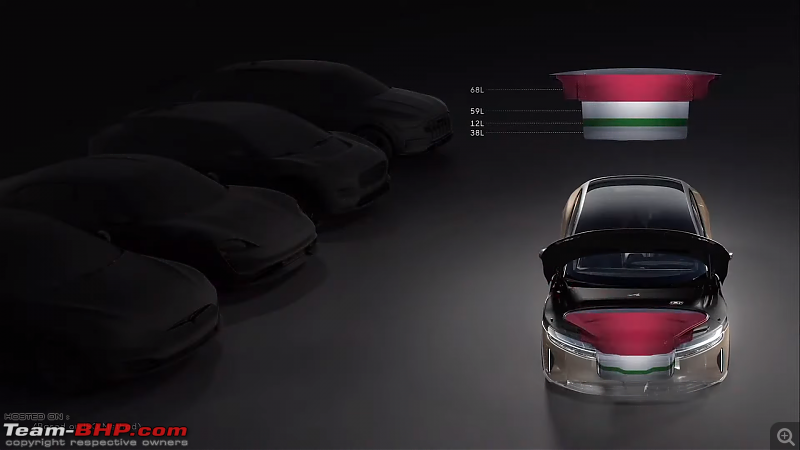
- Frunk opening and space.
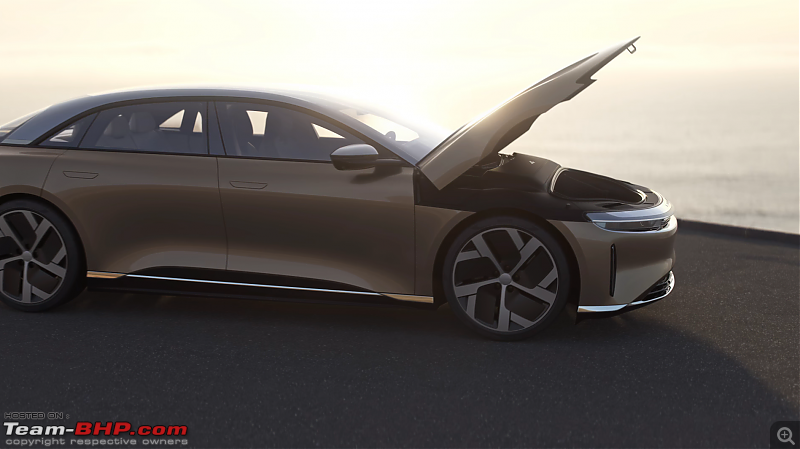
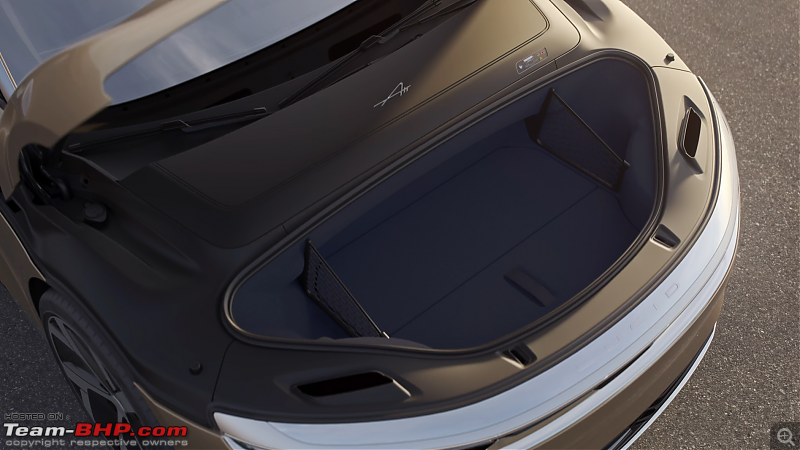
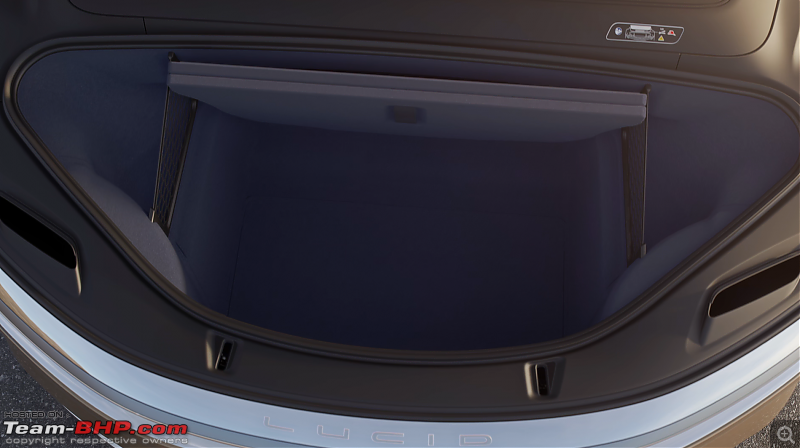
- Trunk opening and space. The wraparound opening is indeed funky

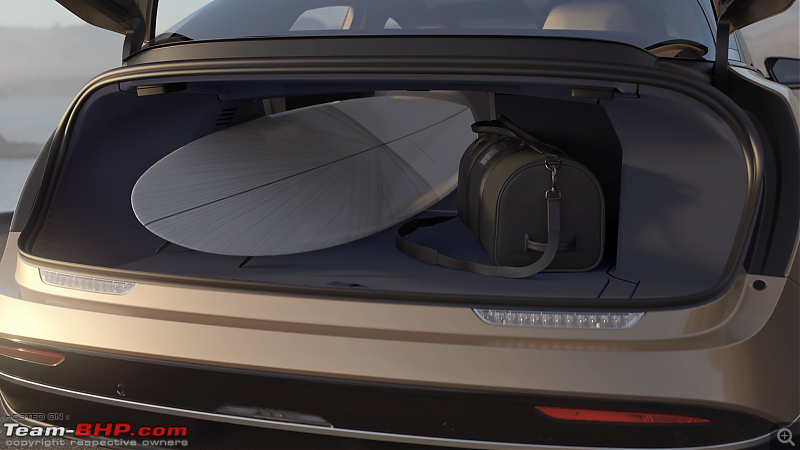
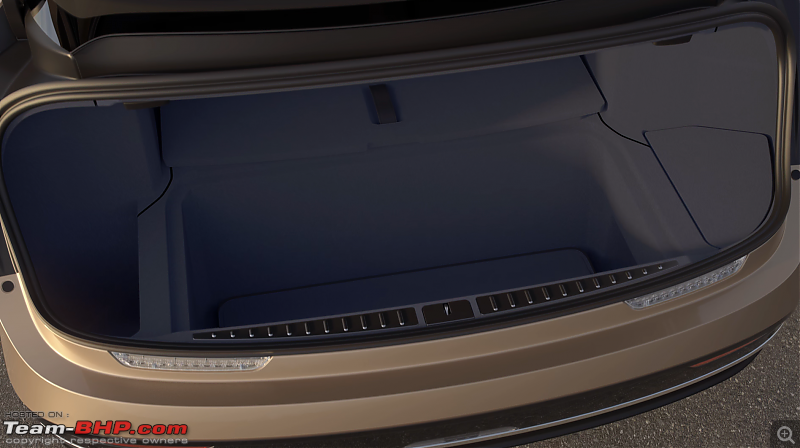
Range & Efficiency- 517miles (832km) EPA estimated range on a single charge. A nice video below and the related article of their prototype's real world driving test:
- 0.21 Cd - Most Aerodynamically efficient luxury car
- 4miles per kWh - translates to 250Wh/mile or 156Wh/km. This is in compact sedan / small hatchback EV territory and does not look like an F segment luxury sedan at all (Taycan wink wink) .
- The battery enclosure provides structural rigidity and also is curved up towards the rear to serve as a diffuser, to increase efficiency. I presume this accentuates the teardrop shape which is considered the most efficient aerofoil shape
- Battery pack designed modular and scalable like Lego blocks
- Lucid claims that they have 17% more efficiency than their nearest competitor (Tesla wink wink). This means they can extract 17% more range from the similarly sized pack of the competitor's battery pack. This is quite a remarkable achievement. Except Tesla (and now Lucid), other car manufacturers are still sourcing battery modules/cells from other suppliers. This makes them rely on what the suppliers innovate and just follow the flow. Lucid has a definite advantage and edge here. We have to wait and watch how good the long term state of health of such efficient battery packs
Wunderbox - Innovation in the EV charging, V2V and V2G all in one packaging- Uses solid state carbide switching (Traditionally the HV power electronic circuits use IGBTs). For those Power electonic enthusiasts, here is a general link for comparison of IGBTs vs Silicon carbide MOSFETs.
- Helps DC charging upto 920V
- Bidirectionality which helps in using the car's HV battery as a power source for your home or even an another car
- Boosts conventional super / high speed charger voltages from 400V to 900V Lucid air EV system voltage.
- 300kW DC charging speeds and 19.2kW AC 3 phase charging speeds
Comfort - Innovation in HVAC packaging- Two blowers - one for front and one for rear. This probably reduces the cooling time
- Also the blowers are placed not in the cabin, but outside the cabin, just above the drive unit. This reduces the noise with which they run on hot days and also generally most blower noise while cruising - COOL and CALM.

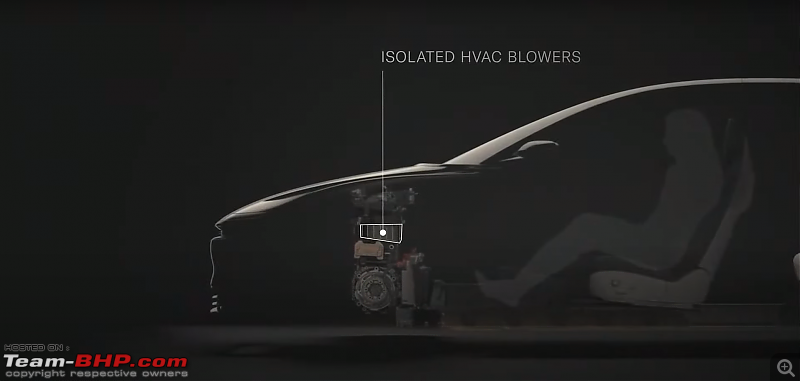
Cost and vertical integration:- Mass production is the key ingredient in system design. To enable cascading of technologies developed in expensive cars to trickle down to the 'Man in the Street' (That's how Lucid air puts expensive model in perspective)
- Five key elements in-house: Battery, motor, transmission, power electronics & software
- The business model also is planned to let Lucid air's technologies available for other manufacturers. This will help not only Lucid grow faster, but a lot of smaller EV companies and aftermarker system/kit suppliers. I will not be surprised even if bigger OEMs will have Lucid's powertrain and battery systems in their cars.
- Also in the launch film, they revealed a teaser of their project gravity which is an electric SUV
ADAS and software- 12V Redundant ethernet based network within the car
- 32 sensors - 6 front 6 rear ultrasonic sensors, 1 front radar and 11 Lidar sensors - all around and possibly the rest 8 are cameras: 7 - all around outside and 1 camera facing driver. I just did calculate them. (Indeed one needs to pause the video several times to get the finer details)
- OTA updates
Retail experience:- Lounges with mid century interiors
- Virtual reality based in vehicle experience
- Influence of video games for online vehicle order configuration
Trivia on the launch date - 09-09-2020- 170th Anniversary of founding the state of california
- 09:09 - standing quarter mile time of Lucid air
- World EV day
Since Bjorn Nyland is one of those guys, who has driven and tested the most variety of EVs, he seems to like Lucid air too. Watch below what he has to say on Lucid air.
 (40)
Thanks
(40)
Thanks

 (2)
Thanks
(2)
Thanks
 (1)
Thanks
(1)
Thanks
 (1)
Thanks
(1)
Thanks
 (2)
Thanks
(2)
Thanks
 (2)
Thanks
(2)
Thanks
 (1)
Thanks
(1)
Thanks

 (2)
Thanks
(2)
Thanks
 (1)
Thanks
(1)
Thanks
 (1)
Thanks
(1)
Thanks
 (1)
Thanks
(1)
Thanks




 )
)





























